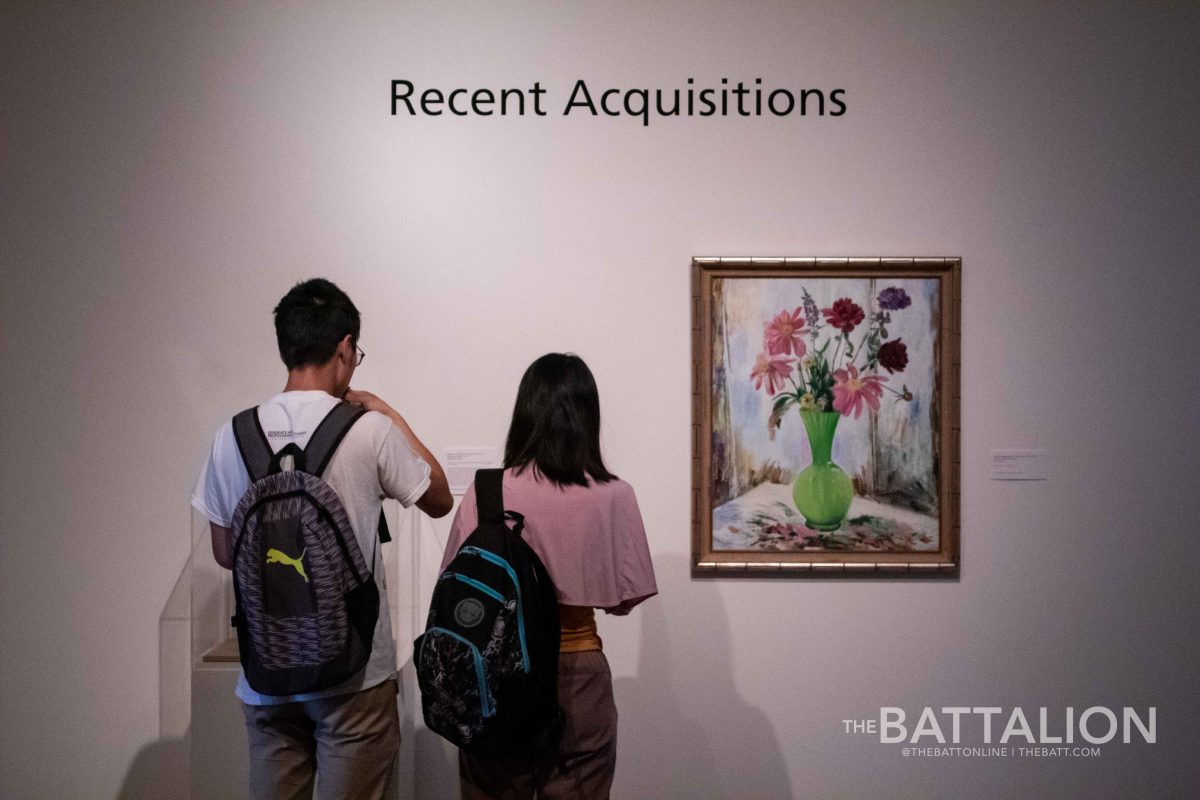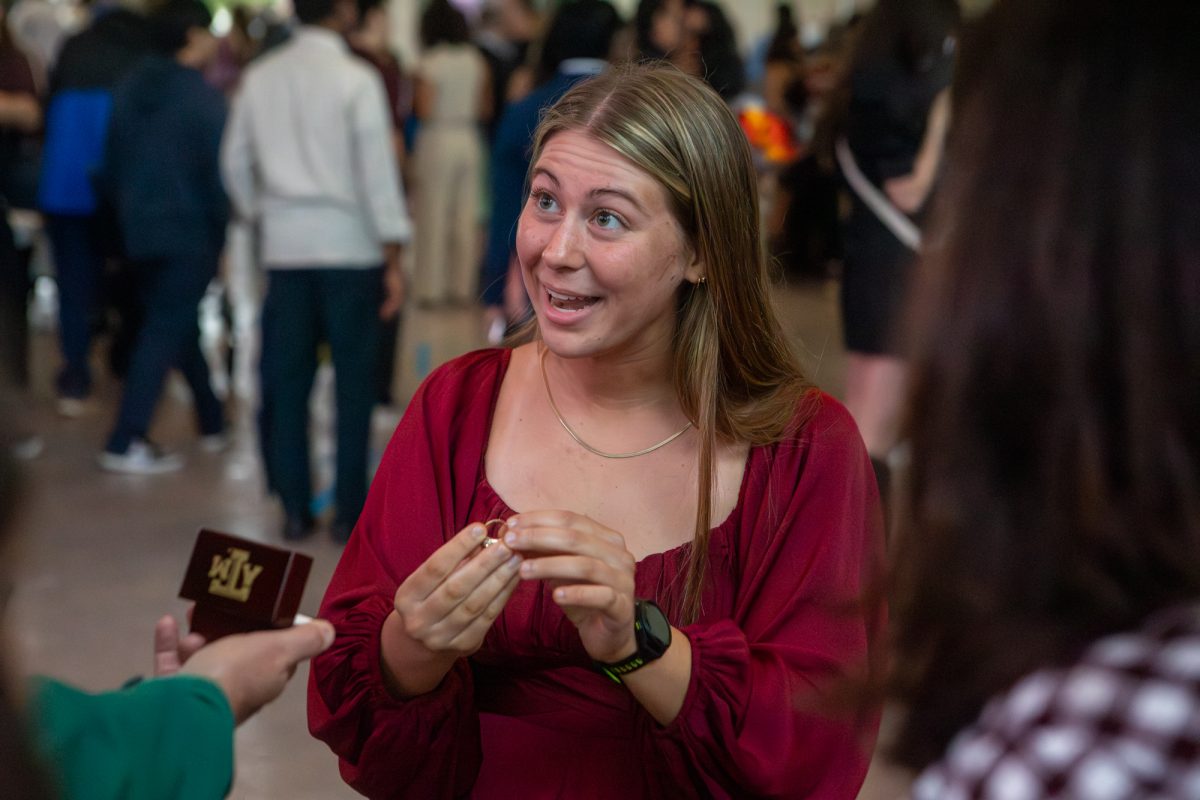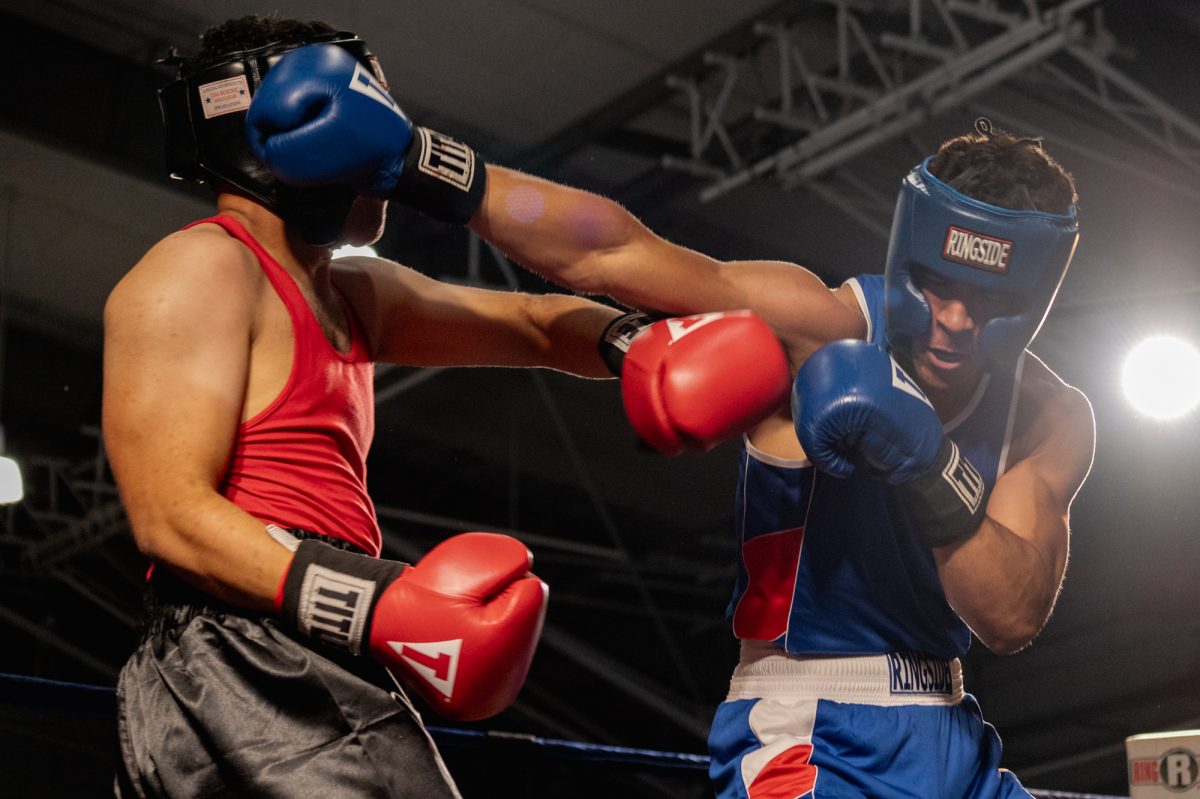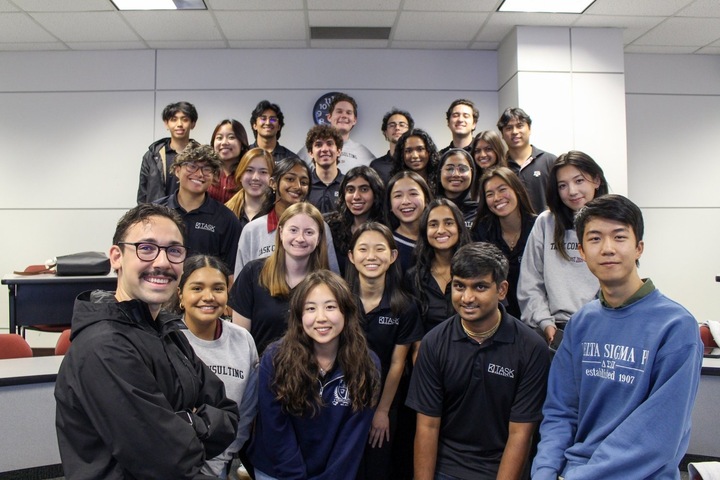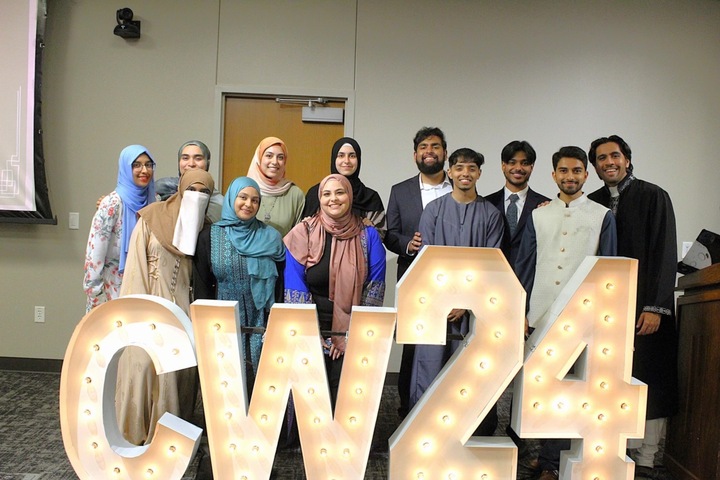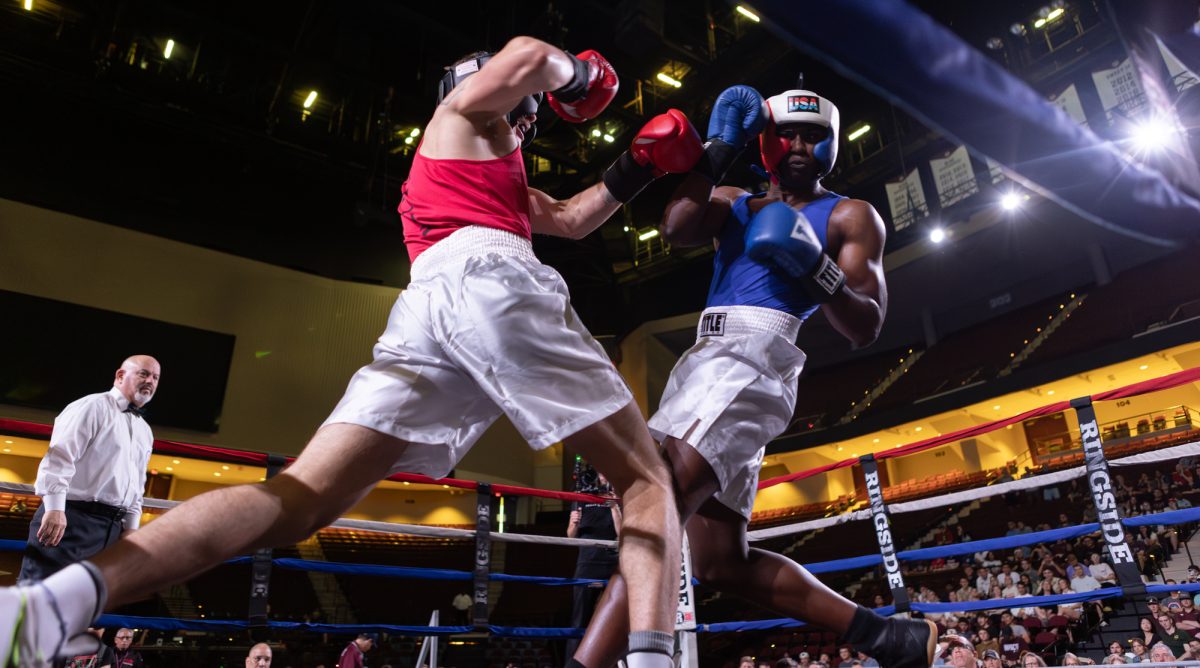To inform patrons about their “Texas in the Abstract” art exhibit, Stark Galleries hosted a gallery talk and reception on Wednesday evening.
Mark White, the director of the Fred Jones Museum of Art at the University of Oklahoma, discussed the artists and styles of the artwork, which will be on display until Oct. 13.
While walking through the gallery, White went in-depth into the reasons behind each artist’s style, their choices of paint and subject, how other art movements such as cubism and impressionism were presented in these abstract pieces, and how abstract art comes together for each individual painter.
“What the artist was really putting down was less what they saw, but how they sort of experienced it mentally, emotionally and spiritually,” White said. “When we have a title, we can kind of get the sense of what he’s trying to depict here. But I wouldn’t try to pin it down too much, because to some degree, this is his reaction to the scene.”
White emphasized how the development and content of abstract art was often affected, sometimes subtly and sometimes obviously, by what was going on in the world at the time, such as the end of World War II and the uncertainty of the Cold War.
“Many modern artists [in the 1960s] were trying to get away from certainties,” White said. “Certainties no longer seemed to have a kind of relevance they once did, so artists began dealing with things that were meaningful only to them. For others, it was ‘I can’t trust the reality that has been created for me by politicians, war heroes and by religious leaders. The only reality we can trust is our own.’”
During the discussion, White touched on the importance of universities in proliferating the ideas of abstract artists because universities help foster new ideas and ways of expression, helping create a basis for modernism as we know it today.
“This exhibition repeats that connection by bringing these artists back to a museum at a university,” Stark Galleries Director Catherine Hastedt said. “The artists featured in this exhibition had a tremendous impact on art in Texas. Not only did they make art, many of them also taught, which inspired future generations of artists.”
This exhibit follows the evolution of Texan abstract art from 1920 to 1980 through a selection of works from both the Texas A&M permanent art collection and the Linda and William Reaves Collection of Texas Art.
“We have had the privilege of knowing many of the artists whose works are displayed here and it definitely adds an additional dimension to our enjoyment of these pieces by virtue of having a first-hand interpretation by the artist!” collectors William and Linda Reaves said in an email interview with The Battalion. “Each painting has its own backdrop. Robert Preusser’s casein painting entitled ‘Arena’ is based on the artist’s recollection of Friday night wrestling matches at the old Sam Houston Coliseum in Houston, events Preusser attended as a teenager and which obviously left a meaningful impression on him.”
William and Linda have been collecting Texas art for almost 40 years and now have an extensive collection that contains several hundred pieces. Since they are knowledgeable on all the artwork they have loaned to this collection, William and Linda helped co-write the art catalogue that accompanies the exhibit, guiding readers and patrons who couldn’t attend the gallery talk through the backgrounds of the artists and paintings featured in “Texas in the Abstract.”
“Over the years, we have learned that we especially favor Texas paintings whose subjects reflect the character and diversity of our state — its people, natural and man-made environment, and the nature of work and recreation,” Linda and William said. “Today, we appreciate abstract art as a means for artists to convey their visions in novel and creative ways and to really stress color and form to bring the viewer a more dramatic subject or mood.”
MSC art gallery talk explores history and style of “Texas in the Abstract” exhibit
September 26, 2019
Photo by Photo by Kaylee Cogbill
Two students look on to some recent paintings acquired by the Stark Galleries before the Texas in Abstract lecture.
0
Donate to The Battalion
$2065
$5000
Contributed
Our Goal
Your donation will support the student journalists of Texas A&M University - College Station. Your contribution will allow us to purchase equipment and cover our annual website hosting costs, in addition to paying freelance staffers for their work, travel costs for coverage and more!
More to Discover




